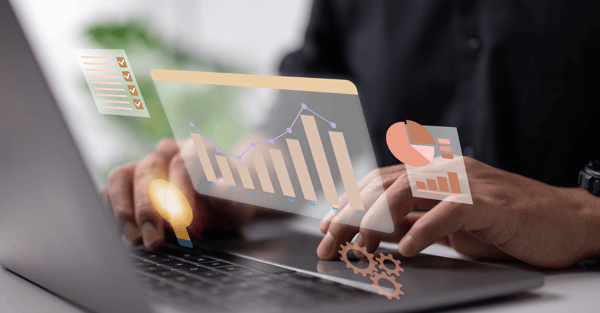- Blog Overview
- Knowledge
- 5 ways to utilize appointments data to improve operational efficiency

5 ways to utilize appointments data to improve operational efficiency
The Qmatic Team |March 29 2023 | 7 min
With a smart appointment scheduling system, you can collect data from each touchpoint in the customer journey and process it to get insights for continuous improvement. This article aims to explain which data to collect and how to improve your organization with insights from the customer journey.
There are different types of appointment solutions on the market. With the more basic systems, you enable appointment scheduling for your visitors, while the more complex system automates the entire appointment management process, from the booking, arrival, service, and feedback process. This article explains smart appointment scheduling solutions that collect and analyze data, which fall into the latter category of appointment solutions.
How to use appointment data to improve your organization
Having access to customer journey data is important and can bring insights to improve your operations and organizations. Below are some examples of what you can do with the data you collect from booked appointments.
1. Spot gaps in the operations and areas for improvement
By keeping track of the average waiting time and service time, you get a clear picture of how efficient your organization is and what customer value you deliver. If you have a longer time than the industry standard, there are many measures you can take that can improve your waiting time and service time. Having the data allows you to compare your level of service and operations to the standard, so that you can better identify how many improvements you need to make. Additionally, by keeping track of how many visitors don’t appear at the appointed time, you can draw conclusions such as that you need to increase reminders shortly before each appointment.
2. Extend your capacity
As you can get a clear overview of your appointments, you can identify and prioritize the time slots you want the new visitors to schedule. For example, if your staff are fully booked in the morning and afternoon but doesn’t have any appointment during mid-day, you can use this data to suggest the available time slots for new visitors and thus maximize your resources.
3. Identify busy periods
When you have collected data for a while, you’ll often see a pattern in the appointments. Maybe some of the weekdays are busier than others, or certain months and time periods show more booked appointments. By analyzing this data, you can decide on the steps to take to anticipate these busy periods to optimize your operations while delivering excellent customer service.
4. Plan resources in advance
With a smart appointment scheduling system, you can get a complete overview of your current and future workload, giving you the opportunity to plan and organize staff distribution in advance. Having clear information about the customers' needs early in their journeys also help you to allocate your resources in the most efficient manner, so that you can match the skillsets with the demands accordingly.
5. Identify specific demand for your services
You may offer several different types of services. By collecting data and evaluating the demand of different types of services, you can conclude if you want to increase the availability of the services with the greatest demand.
How to get started on collecting data
A standard appointment scheduling system can give you insights into the number of appointments booked or which services are in high demand, but don’t consider what happens after the booking. How would you get insights into the length of service time, arrival process, and other parts of the customer journey?
A smart appointment scheduling system that covers the whole customer journey can help you get the data and insights from every touchpoint in the journey, from the booking, arrival/check-in, service, and post-service (feedback).
Here are a few examples of data that can be collected from each touchpoint in the customer journey:
- Pre-service (booking): data about the type of services that are in high demand, peak periods, the number of appointments booked in a day, the number of expected visitors during a period of time
- Check-in/arrival: show rates and arrival time (is it early, late, or on-time? This data can be used to set up booking conditions to deal with different scenarios)
- Service: average length of time for a service (if it’s too long, what causes it? If it’s a complex problem, maybe a more senior staff member is required for the next time the service is required).
- Post-service: feedback from customers, a valuable insight for improvements
Getting detailed insights into your customer journey is the key to drive improvements to provide excellent services in an efficient way.
If you’d like to learn more about smart appointment scheduling solutions and how to optimize them to improve your business, download the guide below.




